The Godzilla (??? Gojira) franchise is a media franchise featuring Godzilla, owned and created by Toho. It is recognized by Guinness World Records to be the longest continuously running movie franchise, having been in on-going production from 1954 to the present day, with several hiatuses of varying lengths. The film franchise consists of 34 films, 32 produced by Toho and 3 Hollywood films.
Theatrical release poster for Godzilla (1954) | |
| Studios |
|
|---|---|
| No. of films | 34 |
| Years active | 1954–present |
| Main character | Godzilla |
| First film | Godzilla (1954) |
| Latest film | Godzilla: The Planet Eater (2018) |
| Genre(s) | Kaiju Tokusatsu Science fiction Fantasy |
| Country | Japan United States |
The first film, Godzilla, was directed by Ishir? Honda and released by Toho in 1954 and became an influential classic of the genre. It featured political and social undertones relevant to Japan at the time. The original introduced an acclaimed music score by Akira Ifukube, which was reused in many of the later films. The original also introduced the work of special effects master Eiji Tsuburaya, who used miniatures and "suitmation" to convey the large scale of the monster and its destruction. For its North American release, the film was reworked as an adaptation and released in 1956 as Godzilla, King of the Monsters!. The adaptation featured new footage with Raymond Burr edited together with the original Japanese footage.
Toho was inspired to make the original Godzilla after the commercial success of the 1952 re-release of King Kong and success of The Beast from 20,000 Fathoms (1953). The success of the Godzilla series itself would go on to inspire other monster films worldwide. The popularity of the films has led to Godzilla being featured in other media, such as television, music, literature, and video games. Godzilla has been one of the most recognizable symbols in Japanese pop culture worldwide, remains a well-known facet of Japanese films and was one of the first examples of the popular kaiju and tokusatsu subgenres in Japanese entertainment.
The tone and themes vary per film. Several of the films have political themes, others have dark tones, complex internal mythology, or are simple action movies featuring aliens or other monsters, while others have simpler themes accessible to children. Godzilla's role varies from purely a destructive force to an ally of humans, or a protector of Japanese values, or a hero to children. The name Godzilla is a romanization of the original Japanese name Gojira—which is a combination of two Japanese words: gorira (???), "gorilla", and kujira (???), "whale". The word alludes to the size, power and aquatic origin of Godzilla. As developed by Toho, the monster is an offshoot of the combination of radioactivity and ancient dinosaur-like creatures, indestructible and possessing special powers (see Godzilla characteristics).
Screenplay
The Godzilla film series is broken into several (different) eras reflecting a characteristic style and corresponding to the same eras used to classify all kaiju eiga (monster movies) in Japan. The first two eras refer to the Japanese emperor during production: the Sh?wa era and the Heisei era. The third is called the Millennium era as the emperor (Heisei) is the same but these films are considered to have a different style and storyline than the Heisei era.
Over the series history, the films have reflected the social and political climate in Japan. In the original film, Godzilla was an allegory for the effects of the hydrogen bomb, and the consequences that such weapons might have on earth. The radioactive contamination of the Japanese fishing boat Daigo Fukury? Maru through the United States' Castle Bravo thermonuclear device test on Bikini Atoll on March 1, 1954, led to much press coverage in Japan preceding the release of the first movie in 1954. The Heisei and Millennium series have largely continued this concept.
Sh?wa period (1954–1975)
The initial series of movies is named for the Sh?wa period in Japan (as all of these films were produced before the "Sh?wa Emperor" Hirohito's death in 1989). This Sh?wa timeline spanned from 1954, with Godzilla, to 1975, with Terror of Mechagodzilla. With the exceptions of Godzilla, Godzilla Raids Again, Mothra vs. Godzilla and Terror of Mechagodzilla, much of the Sh?wa series monster-action was intentionally made comical and laughable for children, with Godzilla frequently engaged in clownish slapstick wrestling with other monsters. Starting with Ghidorah the Three-Headed Monster, Godzilla began evolving into a friendlier, more playful antihero (this transition was complete by Son of Godzilla, where it is shown as a good character), and as years went by, it evolved into an anthropomorphic superhero. Ghidorah the Three-Headed Monster was also significant for introducing Godzilla's arch-enemy and the main antagonist of the movie series, King Ghidorah. The films Son of Godzilla and All Monsters Attack were aimed at youthful audiences, featuring the appearance of Godzilla's son, Minilla. Godzilla vs. Mechagodzilla was notable for introducing Godzilla's robotic arch-enemy and secondary villain of the movie series Mechagodzilla. The Sh?wa period tied loosely in to a number of Toho-produced films in which Godzilla himself did not appear and consequently saw the addition of many monsters into the Godzilla continuity, three of which (Mothra, Rodan and Varan) originated in their own solo movies and another five (Anguirus, Kumonga, Baragon, Manda and Gorosaurus) appeared in their first films as either antagonistic or secondary characters.
Haruo Nakajima mainly portrayed Godzilla since 1954 until his retirement in 1972. However, other stunt actors portrayed the character in his absence, such as Katsumi Tezuka, Y? Sekida, Ryosaku Takasugi, Seiji Onaka, Shinji Takagi, Isao Zushi, and Toru Kawai. Eiji Tsuburaya directed the special effects for the first six films of the series. His protege Sadamasa Arikawa took over the effects work for the next three films (with Tsuburaya supervising), while Teruyoshi Nakano directed the special effects for the last six films of the series.
Heisei period (1984–1995)
Toho rebooted the series in 1984 with The Return of Godzilla, starting the second era of Godzilla films, known as the Heisei series. The Return of Godzilla serves as a direct sequel to the original 1954 film and ignores the subsequent events of the Showa era. The Return of Godzilla was released in 1984, five years before the new emperor, but is considered part of this era, as it is a direct predecessor to Godzilla vs. Biollante (1989), which came out in the first year of the new emperor's reign.
The Heisei films are set in a single timeline, with each film providing continuity to the other films, and brings Godzilla back as a destructive force of nature that is feared by humans. The biological nature and science behind Godzilla became a much more discussed issue in the films, showing the increased focus on the moral aspects of genetics. Godzilla vs. King Ghidorah gave the first concrete birth story for Godzilla, featuring a "Godzillasaurus" dinosaur-like creature that was mutated by nuclear radiation into Godzilla. Godzilla was portrayed by Kenpachiro Satsuma for the Heisei films while the special effects were directed by Koichi Kawakita, with the exception of The Return of Godzilla, for which the effects were directed by Teruyoshi Nakano.
Millennium period (1999–2004)
Toho rebooted the franchise for a second time, with the 1999 film Godzilla 2000: Millennium, starting the third era of Godzilla films, known as the Millennium series. The Millennium series is treated similarly to an anthology series where each film, with the exception of Godzilla Against Mechagodzilla and Godzilla: Tokyo S.O.S. (which are a series all their own), is set in its own timeline and follows-up on the events of the original 1954 film, but ignores the events of the Sh?wa and Heisei eras.
After the release of 2004's Godzilla: Final Wars, marking the 50th anniversary of the Godzilla film franchise, Toho decided to put the series on hiatus for another ten years. Toho also demolished the water stage on its lot used in numerous Godzilla, kaiju and tokusatsu films. Yoshimitsu Banno, who had directed 1971's Godzilla vs. Hedorah, secured the rights from Toho to make an IMAX 3D short film production, based on a story similar to his Hedorah film. This project eventually led to the development of Legendary's Godzilla.
Tsutomu Kitagawa portrayed Godzilla for the majority of the Millennium films, with the exception of Godzilla, Mothra and King Ghidorah: Giant Monsters All-Out Attack, in which Godzilla was portrayed by Mizuho Yoshida. Unlike the Showa and later Heisei films, the special effects for the Millennium films were directed by multiple effects directors such as Kenji Suzuki (Godzilla 2000, Godzilla vs. Megaguirus), Makoto Kamiya (Godzilla, Mothra and King Ghidorah: Giant Monsters All-Out Attack), Yuichi Kikuchi (Godzilla Against Mechagodzilla), and Eiichi Asada (Godzilla: Tokyo S.O.S., Godzilla: Final Wars).
Current period (2016–present)
In December 2014, Toho announced plans for a new Godzilla film of their own for a 2016 release. The film is intended to be Toho's own reboot of the Godzilla franchise and is co-directed by Hideaki Anno and Shinji Higuchi (both who collaborated on the anime Neon Genesis Evangelion), with the screenplay written by Anno and the special effects directed by Higuchi. Principal photography began on September and ended in October with the special effects work following in November that year. Shin Godzilla was released in Japan on July 29, 2016 in IMAX, 4DX, and MX4D to positive reviews and was a box office success.
In August 2016, Toho announced plans for a trilogy of anime Godzilla films with Polygon Pictures animating the films and Netflix distributing the trilogy worldwide, except in Japan where each film will be given a theatrical release by Toho. The first film, titled Godzilla: Planet of the Monsters, was released on November 17, 2017. The second film, titled Godzilla: City on the Edge of Battle, was released on May 18, 2018. The third and final film in the trilogy, titled Godzilla: The Planet Eater, was released on November 9, 2018.
In January 2018, Toho announced its plans to invest 15 billion yen ($135 million) for the next three years beginning in 2019 to co-produce content with Hollywood and Chinese studios who have licensed Toho's properties, such as Godzilla, Your Name, and Pokémon. Toho will invest 25% in production costs and will earn a higher share in revenue and manage creators rights so their creative input will be shown in each work.
In May 2018, Toho’s Chief Godzilla Officer Keiji Ota revealed that a sequel to Shin Godzilla will not happen but revealed plans for a "World of Godzilla", a shared cinematic universe between Godzilla and other Toho monsters after 2021. Ota cited the Marvel Cinematic Universe as an influence, with plans to release a new film every one to two years. Ota stated:
"After 2021, we’re thinking of a potential strategy that Godzilla movies uninterrupted at a rate of every 2 years, although there is a preference for a yearly pace as well. The future of the series and its forwarding developments are very conscious of the method of "shared universe". Godzilla, Mothra, King Ghidorah, etc. could all share a single world view much like a Marvel movie where Iron Man and the Hulk can crossover with each other. It is said that each movie can be a possible film production where any one of them could lead a film of their own as the titular character." – Keiji Ota, translated from Nikkei style.
American productions
In 1956, Jewell Enterprises Inc., licensed Godzilla and produced an "Americanized" version of the film Godzilla, King of the Monsters!. The film utilized a majority of the footage from the Japanese original but a majority of the political themes and social commentaries were removed, resulting in 30 minutes of footage from the Japanese original replac
Watch movie Godzilla Film Series online on Amazon
Watch movie Godzilla Film Series online
Watch The Movie On PrimeEk Aur Ek Gyarah Full HD Movie Download

Prem Pratigyaa Full HD Movie Download
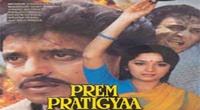
Mungaru Male Full HD Movie Download

Billo Badshah Full HD Movie Download
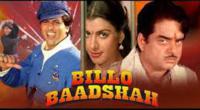
Ujala Full HD Movie Download

Prem Aggan Full HD Movie Download

Karz Chukana Hai Full HD Movie Download
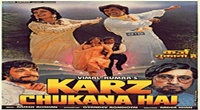
Hum Se Badhkar Kaun:The Entertainer Full HD Movie Download
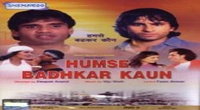
Thank You (2011) Full HD Movie Download
.jpg)
Yeh Hai Aurat Full HD Movie Download
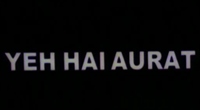
Kalachakram (1980) Full HD Movie Download
.jpg)
College Student Full HD Movie Download

Kalshekhar Aahet Ka Full HD Movie Download

Labaad Kuthli Full HD Movie Download
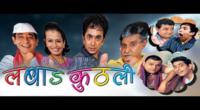
A Time to Kill Full HD Movie Download
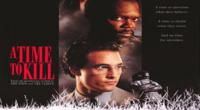
The Matrix Revolutions Full HD Movie Download
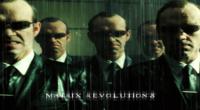
Shalabam Full HD Movie Download

Prema Kavyam Full HD Movie Download

Malli Inkokkasari Full HD Movie Download
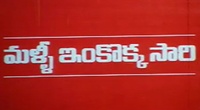
Mayadari Malligadu Full HD Movie Download
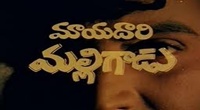
Indhu Full HD Movie Download

Download latest Movie from bollywood
- 1> baaghi 3
- 2> THE SKY IS PINK MOVIE FULL STORY AND REVIEW
- 3> Luka Chuppi
- 4> TO ALL THE BOYS I’VE LOVED BEFORE
- 5> Kabir Singh
- 6> Street Dancer 3D
- 7> Simmba
- 8> Gone Girl
- 9> The Girl Who Lived
- 10> Ludo
- 11> DILWALE DULHANIA LE JAYENGE
- 12> GUILTY
- 13> The Godfather
- 14> Adventures of Rusty
- 15> Sooryavanshi
- 16> Satyameva Jayate 2
- 17> Thappad
- 18> Bhool Bhulaiyaa 2
- 19> KGFChapter 2
- 20> Mardaani 2
- 21> Pinjar
- 22> Shivaji maharaj
- 23> Ek Villian 2
- 24> Hungama 2
- 25> Divergent
- 26> Mumbai Saga
- 27> The Internship
- 28> HIT (telugu)
- 29> Panga
- 30> The perfect date
- 31> 16 December
- 32> Gopala Gopala (Telugu)
- 33> Brahmastra
- 34> Gangubai Kathiawadi
- 35> Manmadhudu
- 36> Nenu local
- 37> Mahanati
- 38> Shatamanam bavathi
- 39> Lagaan
- 40> After
- 41> MOM
- 42> Shamshera
- 43> Raguvaran BTech
- 44> Khakee
- 45> The villain
- 46> OM
- 47> Mr. perfect
- 48> Bueatifull mind
- 49> Hichki
- 50> Gabbar Singh
- 51> Jogi
- 52> Before Sunrise
- 53> Before Sunset
- 54> Before Midnight
- 55> The Big Bull
- 56> Top Gun: Maverick
- 57> The Purge
- 58> The Sky is Pink
- 59> Laxmmi Bomb
- 60> Sadak 2
- 61> Sufna
- 62> Prithviraj
- 63> PK
- 64> Coolie No 1(2020)
- 65> Black Widow
- 66> Dear Zindagi
- 67> Dil Bechara
- 68> PHIR HERA PHERI
- 69> WAR
- 70> Dostana
- 71> RRR: Roudram Ranam Rudhiram
- 72> Maidan
- 73> Dabbang 3
- 74> Chhalaang
- 75> life as we know it
- 76> SherShaah
- 77> Sandeep Aur Pinky Faraar
- 78> Event Horizon
- 79> 83
- 80> Radhe: Your Most Wanted Bhai
- 81> Gunjan Saxena: The Kargil Girl
- 82> Mr India
- 83> Vivah
- 84> Anokha Bandhan
- 85> Ghost
- 86> Bhoot: Part One - The Haunted Ship
- 87> Haseen Dilruba
- 88> Laal Singh Chaddha
- 89> Qismat
- 90> Rajput
- 91> Drive
- 92> Dil Chahta Hai
- 93> Dil Ki Baazi
- 94> Dil Ka Rishta
- 95> Teesri Manzil
- 96> Dil
- 97> Love Aaj Kal
- 98> Khaali Peeli
- 99> Bunty Aur Babli 2
- 100> Atrangi Re
- 101> Gulabo Sitabo
- 102> Jodi
- 103> Suraj Pe Mangal Bhari
- 104> Deewana
- 105> Attack
- 106> Sardar Udham Singh
- 107> Toofan
- 108> THE LOVEBIRDS
- 109> Jersey
- 110> Ginny Weds Sunny
- 111> Thalaivi
- 112> Shiddat
- 113> Angels vs Zombies
- 114> Koi Mil Gya
- 115> Thank God
- 116> Bhuj: The Pride of India
- 117> Hum Aapke Hain Kaun
- 118> The Platform
- 119> Bird Box
- 120> Roohi Afzana
- 121> Torbaaz
- 122> Nikamma
- 123> World War Z
- 124> Extraction
- 125> Train to Busan
- 126> Life of Pi
- 127> SHAADI MEIN JROOR AANA
- 128> Himmat Aur Mehnat
- 129> To All The Boys: P.S. I Still Love You
- 130> Mimi
- 131> Good Newwz
- 132> Shubh Mangal Zyada Saavdhan
- 133> Raabta
- 134> Harry Potter and the Philosopher's Stone
- 135> Harry Potter and the Chamber of Secrets
- 136> Chhapaak
- 137> War of the Worlds
- 138> Harry Potter and the Prisoner of Azkaban
- 139> Harry Potter and the Goblet of Fire
- 140> MURDER MYSTERY
- 141> Shakuntala Devi
- 142> Bachchan Pandey
- 143> Jayeshbhai Jordar
- 144> Sheer Qorma
- 145> Saina
- 146> 'O' Pushpa I hate tears
- 147> Kedarnath
- 148> MS Dhoni The Untold Story
- 149> Chhichhore
- 150> Badhaai Ho
- 151> Unstoppable
- 152> Oz the Great And Powerful
- 153> The Girl on the Train
- 154> Haathi Mere Saathi 2020
- 155> The Conjuring: The Devil Made Me Do It
- 156> Gandhi Se Pehle Gandhi
- 157> The Song of Scorpions
- 158> Srimanthudu
- 159> Hello Guru Prema Kosame
- 160> Beauty and The Beast
- 161> Black Panther
- 162> Charlie and the Chocolate Factory
- 163> Bole Chudiyan
- 164> Fidaa
- 165> Duvvada Jagannadham
- 166> Bruce Lee: The Fighter
- 167> Hyper
- 168> Yaara
- 169> Red (2020)
- 170> Shivam
- 171> That Is Mahalakshmi
- 172> Nishabdham
- 173> Aashram 2020 web series
- 174> Laxmii
- 175> Mismatched
- 176> STUDENT OF THE YEAR 2
- 177> NAIL POLISH
- 178> Ramprasad Ki Tehrvi
- 179> KAAGAZ
- 180> 12 o Clock
- 181> The Power
- 182> bolo hau
- 183> Tribhanga
- 184> JAMUN
- 185> Madam Chief Minister
- 186> Maasaab
- 187> Aadhaar
- 188> Tanhaji
- 189> Bhaagi 3
- 190> Bhootnath
- 191> MALANG
- 192> Jai Mummy Di
- 193> Haathi Mere Saathi 2021
- 194> Shakeela
- 195> Unpaused
- 196> Annayya
- 197> Vamsoddharakudu
- 198> Mrugaraju
- 199> Narasimha Naidu
- 200> Sankranti
- 201> Manasu Maata Vinadhu
- 202> Anjaane
- 203> Apaharan
- 204> Bachke Rehna Re Baba
- 205> Bewafaa
- 206> Roohi
- 207> Radhe
- 208> Zindagi Khoobsoorat Hai
- 209> Yeh Mohabbat Hai
- 210> Yeh Kya Ho Raha Hai?
- 211> The Tomorrow War
- 212> DehradunDiary
- 213> Meri Shaadi Karaoo
- 214> Matruu Ki Bijlee Ka Mandola
- 215> No One Killed Jesica
- 216> Aag Ka Goola
- 217> Eight Million Dollars
- 218> Three Hundred
- 219> Cats and Dog
- 220> Decoy
- 221> Gold Rush
- 222> You Have Got Mail
- 223> Final Destination three
- 224> Tofan
- 225> Jungle
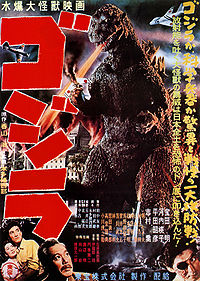 Story of movie Godzilla Film Series :
Story of movie Godzilla Film Series : 